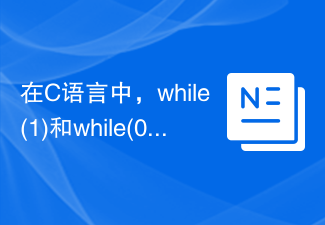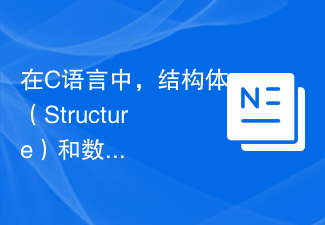Python的3.0版本,常被称为Python 3000,或简称Py3k。相对于Python的早期版本,这是一个较大的升级。
为了不带入过多的累赘,Python 3.0在设计的时候没有考虑向下相容。
许多针对早期Python版本设计的程式都无法在Python 3.0上正常执行。
为了照顾现有程式,Python 2.6作为一个过渡版本,基本使用了Python 2.x的语法和库,同时考虑了向Python 3.0的迁移,允许使用部分Python 3.0的语法与函数。
新的Python程式建议使用Python 3.0版本的语法。
除非执行环境无法安装Python 3.0或者程式本身使用了不支援Python 3.0的第三方库。目前不支援Python 3.0的第三方库有Twisted, py2exe, PIL等。
大多数第三方库都正在努力地相容Python 3.0版本。即使无法立即使用Python 3.0,也建议编写相容Python 3.0版本的程式,然后使用Python 2.6, Python 2.7来执行。
1.性能
Py3.0运行 pystone benchmark的速度比Py2.5慢30%。Guido认为Py3.0有极大的优化空间,在字符串和整形操作上可
以取得很好的优化结果。
Py3.1性能比Py2.5慢15%,还有很大的提升空间。
2.编码
Py3.X源码文件默认使用utf-8编码,这就使得以下代码是合法的:
>>> 中国 = 'china'
>>>print(中国)
china
3. 语法
1)去除了,全部改用!=
2)去除``,全部改用repr()
3)关键词加入as 和with,还有True,False,None
4)整型除法返回浮点数,要得到整型结果,请使用//
5)加入nonlocal语句。使用noclocal x可以直接指派外围(非全局)变量
6)去除print语句,加入print()函数实现相同的功能。同样的还有 exec语句,已经改为exec()函数
例如:
2.X: print "The answer is", 2*2
3.X: print("The answer is", 2*2)
2.X: print x, # 使用逗号结尾禁止换行
3.X: print(x, end=" ") # 使用空格代替换行
2.X: print # 输出新行
3.X: print() # 输出新行
2.X: print >>sys.stderr, "fatal error"
3.X: print("fatal error", file=sys.stderr)
2.X: print (x, y) # 输出repr((x, y))
3.X: print((x, y)) # 不同于print(x, y)!
7)改变了顺序操作符的行为,例如x
2.X:guess = int(raw_input('Enter an integer : ')) # 读取键盘输入的方法
3.X:guess = int(input('Enter an integer : ')) 9)去除元组参数解包。不能def(a, (b, c)):pass这样定义函数了
10)新式的8进制字变量,相应地修改了oct()函数。
2.X的方式如下:
>>> 0666
438
>>> oct(438)
'0666'
3.X这样:
>>> 0666
SyntaxError: invalid token (
>>> 0o666
438
>>> oct(438)
'0o666'
11)增加了 2进制字面量和bin()函数
>>> bin(438)
'0b110110110'
>>> _438 = '0b110110110'
>>> _438
'0b110110110'
12)扩展的可迭代解包。在Py3.X 里,a, b, *rest = seq和 *rest, a = seq都是合法的,只要求两点:rest是list
对象和seq是可迭代的。
13)新的super(),可以不再给super()传参数,
>>> class C(object):
def __init__(self, a):
print('C', a)
>>> class D(C):
def __init(self, a):
super().__init__(a) # 无参数调用super()
>>> D(8)
C 8
<__main__.d object at>
14)新的metaclass语法:
class Foo(*bases, **kwds):
pass
15)支持class decorator。用法与函数decorator一样:
>>> def foo(cls_a):
def print_func(self):
print('Hello, world!')
cls_a.print = print_func
return cls_a
>>> @foo
class C(object):
pass
>>> C().print()
Hello, world!
class decorator可以用来玩玩狸猫换太子的大把戏。更多请参阅PEP 3129
4. 字符串和字节串
1)现在字符串只有str一种类型,但它跟2.x版本的unicode几乎一样。 2)关于字节串,请参阅“数据类型”的第2条目
5.数据类型
1)Py3.X去除了long类型,现在只有一种整型——int,但它的行为就像2.X版本的long
2)新增了bytes类型,对应于2.X版本的八位串,定义一个bytes字面量的方法如下:
>>> b = b'china'
>>> type(b)
str对象和bytes对象可以使用.encode() (str -> bytes) or .decode() (bytes -> str)方法相互转化。
>>> s = b.decode()
>>> s
'china'
>>> b1 = s.encode()
>>> b1
b'china'
3)dict的.keys()、.items 和.values()方法返回迭代器,而之前的iterkeys()等函数都被废弃。同时去掉的还有
dict.has_key(),用 in替代它吧
6.面向对象
1)引入抽象基类(Abstraact Base Classes,ABCs)。
2)容器类和迭代器类被ABCs化,所以cellections模块里的类型比Py2.5多了很多。
>>> import collections
>>> print('\n'.join(dir(collections)))
Callable
Container
Hashable
ItemsView
Iterable
Iterator
KeysView
Mapping
MappingView
MutableMapping
MutableSequence
MutableSet
NamedTuple
Sequence
Set
Sized
ValuesView
__all__
__builtins__
__doc__
__file__
__name__
_abcoll
_itemgetter
_sys
defaultdict
deque
另外,数值类型也被ABCs化。关于这两点,请参阅 PEP 3119和PEP 3141。
3)迭代器的next()方法改名为__next__(),并增加内置函数next(),用以调用迭代器的__next__()方法
4)增加了@abstractmethod和 @abstractproperty两个 decorator,编写抽象方法(属性)更加方便。
7.异常
1)所以异常都从 BaseException继承,并删除了StardardError
2)去除了异常类的序列行为和.message属性
3)用 raise Exception(args)代替 raise Exception, args语法
4)捕获异常的语法改变,引入了as关键字来标识异常实例,在Py2.5中:
>>> try:
... raise NotImplementedError('Error')
... except NotImplementedError, error: ... print error.message
...
Error
在Py3.0中:
>>> try:
raise NotImplementedError('Error')
except NotImplementedError as error: #注意这个 as
print(str(error))
Error
5)异常链,因为__context__在3.0a1版本中没有实现
8.模块变动
1)移除了cPickle模块,可以使用pickle模块代替。最终我们将会有一个透明高效的模块。
2)移除了imageop模块
3)移除了 audiodev, Bastion, bsddb185, exceptions, linuxaudiodev, md5, MimeWriter, mimify, popen2,
rexec, sets, sha, stringold, strop, sunaudiodev, timing和xmllib模块
4)移除了bsddb模块(单独发布,可以从http://www.jcea.es/programacion/pybsddb.htm获取)
5)移除了new模块
6)os.tmpnam()和os.tmpfile()函数被移动到tmpfile模块下
7)tokenize模块现在使用bytes工作。主要的入口点不再是generate_tokens,而是 tokenize.tokenize()
9.其它
1)xrange() 改名为range(),要想使用range()获得一个list,必须显式调用:
>>> list(range(10))
[0, 1, 2, 3, 4, 5, 6, 7, 8, 9]
2)bytes对象不能hash,也不支持 b.lower()、b.strip()和b.split()方法,但对于后两者可以使用 b.strip(b' \n\t\r \f')和b.split(b' ‘)来达到相同目的
3)zip()、map()和filter()都返回迭代器。而apply()、 callable()、coerce()、 execfile()、reduce()和reload
()函数都被去除了现在可以使用hasattr()来替换 callable(). hasattr()的语法如:hasattr(string, '__name__')
4)string.letters和相关的.lowercase和.uppercase被去除,请改用string.ascii_letters 等
5)如果x
6)__getslice__系列成员被废弃。a[i:j]根据上下文转换为a.__getitem__(slice(I, j))或 __setitem__和
__delitem__调用
7)file类被废弃,在Py2.5中:
>>> file
在Py3.X中:
>>> file
Traceback (most recent call last):
File "
file
NameError: name 'file' is not defined
python2.x与python3.x在除法运算上的区别
Python中的除法较其它语言显得非常高端,有套很复杂的规则。Python中的除法有两个运算符,/和//
首先来说/除法:
在python 2.x中/除法就跟我们熟悉的大多数语言,比如Java啊C啊差不多,整数相除的结果是一个整数,把小数部分完全忽略掉,浮点数除法会保留小数点的部分得到一个浮点数的结果。
在python 3.x中/除法不再这么做了,对于整数之间的相除,结果也会是浮点数。
Python 2.x:
>>> 1 / 2
0
>>> 1.0 / 2.0
0.5
Python 3.x:
>>> 1/2
0.5
而对于//除法,这种除法叫做floor除法,会对除法的结果自动进行一个floor操作,在python 2.x和python 3.x中是一致的。
python 2.x:
>>> -1 // 2
-1
python 3.x:
>>> -1 // 2
-1
注意的是并不是舍弃小数部分,而是执行floor操作,如果要截取小数部分,那么需要使用math模块的trunc函数
python 3.x:
>>> import math
>>> math.trunc(1 / 2)
0
>>> math.trunc(-1 / 2)
0
以上内容给大家介绍了Python2.x与Python3.x的区别,希望对大家有所帮助。
 区分win11商务版和消费者版的区别Jan 05, 2024 pm 04:53 PM
区分win11商务版和消费者版的区别Jan 05, 2024 pm 04:53 PMwin11business和consumer版本其实就是消费版还有商业版,两者的区别不大,但还是有的,下面我们就一起来看一下两者的具体区别在哪里。win11business和consumer版本区别:1、两者如果版本相同的话,跟专业版没什么区别。2、两者的功能基本相同,不过微软的授权方式是不同的。3、激活的方式也是不同的,consumer是单一授权,而business是批量授权。4、我们下载consumer就可以了。
 华为GT3 Pro和GT4的差异是什么?Dec 29, 2023 pm 02:27 PM
华为GT3 Pro和GT4的差异是什么?Dec 29, 2023 pm 02:27 PM许多用户在选择智能手表的时候都会选择的华为的品牌,其中华为GT3pro和GT4都是非常热门的选择,不少用户都很好奇华为GT3pro和GT4有什么区别,下面就就给大家介绍一下二者。华为GT3pro和GT4有什么区别一、外观GT4:46mm和41mm,材质是玻璃表镜+不锈钢机身+高分纤维后壳。GT3pro:46.6mm和42.9mm,材质是蓝宝石玻璃表镜+钛金属机身/陶瓷机身+陶瓷后壳二、健康GT4:采用最新的华为Truseen5.5+算法,结果会更加的精准。GT3pro:多了ECG心电图和血管及安
 在C语言中,while(1)和while(0)之间的区别是什么?Aug 31, 2023 am 10:45 AM
在C语言中,while(1)和while(0)之间的区别是什么?Aug 31, 2023 am 10:45 AM我们知道在C语言中,'while'关键字用于定义一个循环,该循环根据传递给循环的条件来工作。现在,由于条件可以有两个值,即真或假,所以如果条件为真,则while块内的代码将被重复执行,如果条件为假,则代码将不会被执行。现在,通过将参数传递给while循环,我们可以区分while(1)和while(0),因为while(1)是一个条件始终被视为真的循环,因此块内的代码将开始重复执行。此外,我们可以说明,传递给循环并使条件为真的不是1,而是如果任何非零整数传递给while循环,则它将被视为真条件,因
 win10逻辑分区和主分区的区别Jan 03, 2024 pm 04:17 PM
win10逻辑分区和主分区的区别Jan 03, 2024 pm 04:17 PM最近不少小伙伴问小编,win10逻辑分区和主分区的区别是什么,我们大多数电脑,其实都是分为了一个C盘主分区,然后其他的D盘、E盘和F盘等都属于逻辑分区,一般情况下是→然后再建→在扩展分区里面,再创建。下面小编整理了详细的教程,一起来看看吧。win10逻辑分区和主分区区别的详细介绍主分区、扩展分区和逻辑分区的区别简单来说,我们大多数电脑,都是分为了一个C盘主分区,然后其他的D盘、E盘和F盘等都属于逻辑分区,将D盘、E盘、F盘等出了主分区之外的磁盘组合,则就属于一个扩展分区。对于硬盘主分区、扩展分区
 win32和win64有什么区别May 29, 2023 pm 05:22 PM
win32和win64有什么区别May 29, 2023 pm 05:22 PMwin32和win64的区别是:1、win32是指Microsoft Windows操作系统的32位环境,win64是指Microsoft Windows操作系统的64位版本,比32位版本更加稳定快速;2、win32最高支持2G的内存,win64必须是4G以上内存;3、win64支持基于64位的处理器,而win32却不能完全支持;4、win32追求简洁,win64追求性能。
 在C语言中,结构体(Structure)和数组(Array)之间的区别是什么?Aug 30, 2023 pm 09:37 PM
在C语言中,结构体(Structure)和数组(Array)之间的区别是什么?Aug 30, 2023 pm 09:37 PM在C中,结构体和数组都用作数据类型的容器,即在结构体和数组中我们都可以存储数据,也可以对它们执行不同的操作。基于内部实现,以下是两者之间存在一些基本差异。Sr.编号键结构数组1定义结构体可以定义为一种数据结构,用作容器,可以容纳不同类型的变量。另一方面,数组是一种用作容器的数据结构,可以容纳相同类型的变量,但不支持多种数据类型变量。2内存分配输入数据的内存分配结构不必位于连续的内存位置。而在数组的情况下,输入数据存储在连续的内存分配中,这意味着数组将数据存储在分配连续内存块的内存模型中(即,具有
 JavaScript和PHP的cookie之间有哪些区别?Sep 02, 2023 pm 12:29 PM
JavaScript和PHP的cookie之间有哪些区别?Sep 02, 2023 pm 12:29 PMJavaScriptCookie使用JavaScriptcookie是记住和跟踪偏好、购买、佣金和其他信息的最有效方法。更好的访问者体验或网站统计所需的信息。PHPCookieCookie是存储在客户端计算机上的文本文件并保留它们用于跟踪目的。PHP透明地支持HTTPcookie。JavaScriptcookie如何工作?您的服务器将一些数据发送到访问者的浏览器cookie的形式。浏览器可以接受cookie。如果存在,它将作为纯文本记录存储在访问者的硬盘上。现在,当访问者到达站点上的另一个页面时
 Vue3和Vue2的区别:更丰富的生命周期钩子Jul 08, 2023 pm 05:19 PM
Vue3和Vue2的区别:更丰富的生命周期钩子Jul 08, 2023 pm 05:19 PMVue3和Vue2的区别:更丰富的生命周期钩子Vue是一种流行的JavaScript框架,用于构建交互式的Web应用程序。Vue2是Vue.js的稳定版本,而Vue3是Vue.js的最新版本。Vue3带来了许多改进,其中之一是更丰富的生命周期钩子。本文将介绍Vue3和Vue2生命周期钩子的区别,并通过代码示例进行演示。Vue2的生命周期钩子在Vue2中,我们


Hot AI Tools

Undresser.AI Undress
AI-powered app for creating realistic nude photos

AI Clothes Remover
Online AI tool for removing clothes from photos.

Undress AI Tool
Undress images for free

Clothoff.io
AI clothes remover

AI Hentai Generator
Generate AI Hentai for free.

Hot Article

Hot Tools

EditPlus Chinese cracked version
Small size, syntax highlighting, does not support code prompt function

Safe Exam Browser
Safe Exam Browser is a secure browser environment for taking online exams securely. This software turns any computer into a secure workstation. It controls access to any utility and prevents students from using unauthorized resources.

SAP NetWeaver Server Adapter for Eclipse
Integrate Eclipse with SAP NetWeaver application server.

ZendStudio 13.5.1 Mac
Powerful PHP integrated development environment

VSCode Windows 64-bit Download
A free and powerful IDE editor launched by Microsoft






